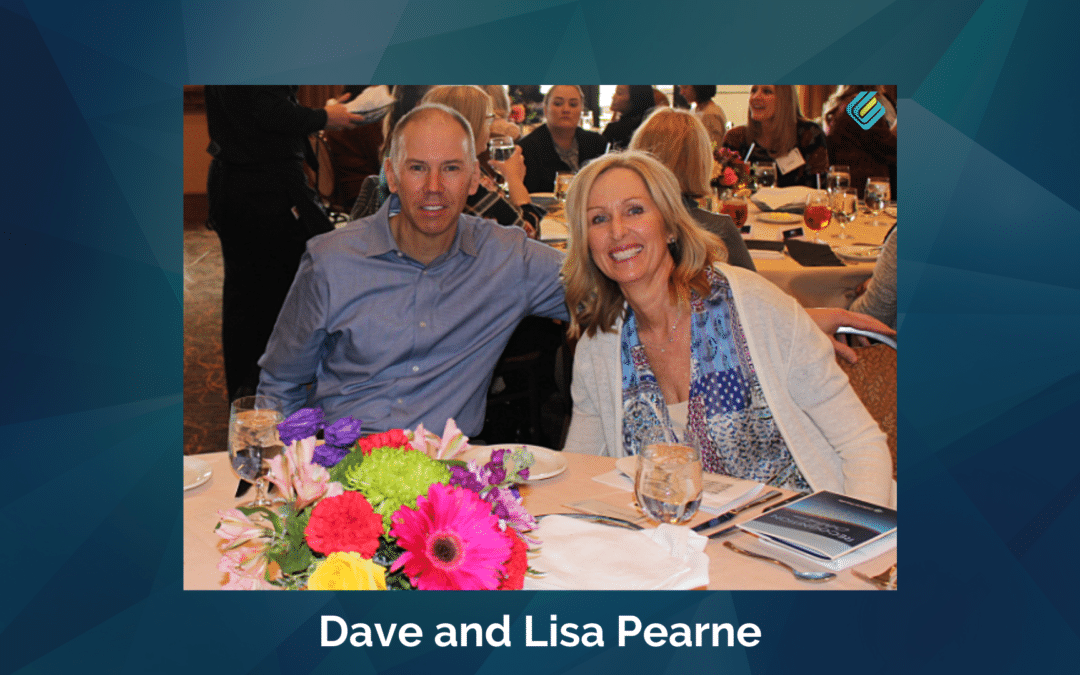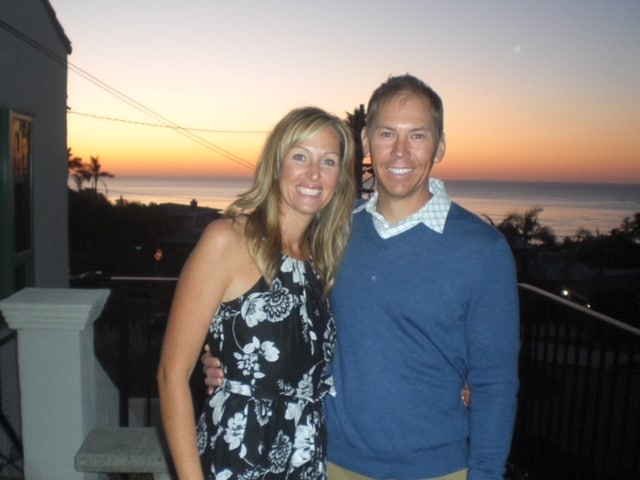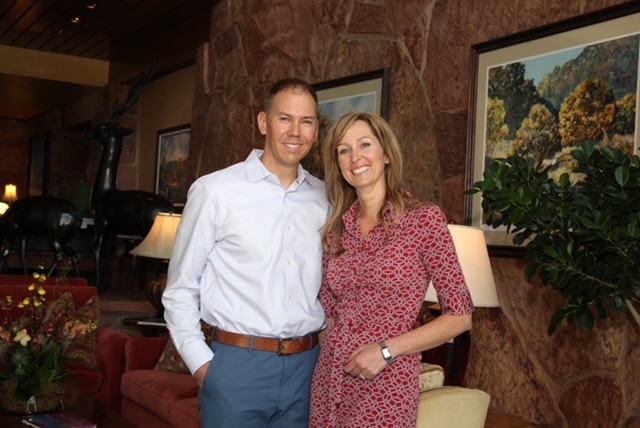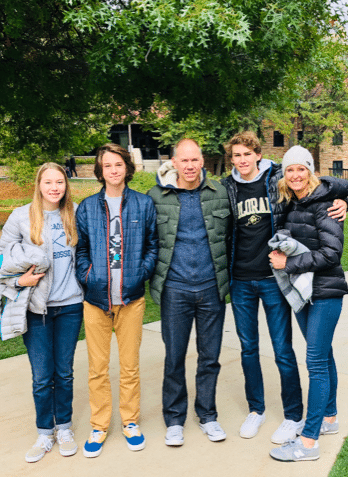
by California Casualty | Educators, News |
As students and educators head back to school, an uninvited visitor is joining them: summer heat. Much of the country is experiencing a late summer heatwave, sending temperatures to possible record highs. Teaching students in hot, uncomfortable classrooms is difficult, and many schools don’t have adequate air conditioning.
Here are some ways to help keep everyone cool in the classroom:
- Minimize using overhead lights (instead, turn off the lights and use lamps or Christmas lights)
- Close shades to block intense sunlight
- Take cool-down breaks between lessons
- Avoid excess movement during the hottest part of the day
- Utilize a climate-controlled computer lab
- Switch off unused electronics that produce heat even in standby mode
- Invest in fans to cool the room
It’s also important for you and your students to stay hydrated. The Centers for Disease Control and Environment advises avoiding sugary and calorie-laden sports and soft drinks when the temperature rises. Water is the best way to hydrate the body, and it helps with cooling. Make sure your students always have easy access to water.
The American Academy of Pediatrics also warns against students engaging in physical exercise in extreme heat because they can overheat quicker than adults. However, if your students engage in physical activity, it is crucial to know the symptoms of heat stroke and heat exhaustion.
Heat Exhaustion
- Heavy sweating
- Weakness
- Muscle cramps
- Cold, pale and clammy skin
- Fast, weak pulse
- Nausea or vomiting
- Fainting
Heatstroke
- High body temperature (above 103 degrees)
- Hot, red, dry or moist skin
- Rapid and strong pulse
- Possible unconsciousness
It’s important to note the key differences in treating each illness. Heat exhaustion can be treated by moving the victim to a cool location. Apply cool wet cloths and having them sip water. Heatstroke can be fatal and requires immediate medical attention.
Educators can beat the heat with these cool lesson plans for hot days:
- Study the buoyancy of various objects in the water
- Learn about water displacement of various objects
- Create various devices that will float in water
- Determine the best methods of keeping an ice cube frozen
- Study cold weather areas like Iceland or Antarctica
This article is furnished by California Casualty, providing auto and home insurance to teachers, law enforcement officers, firefighters, and nurses. Get a quote at 1.800.800.9410 or www.calcas.com.
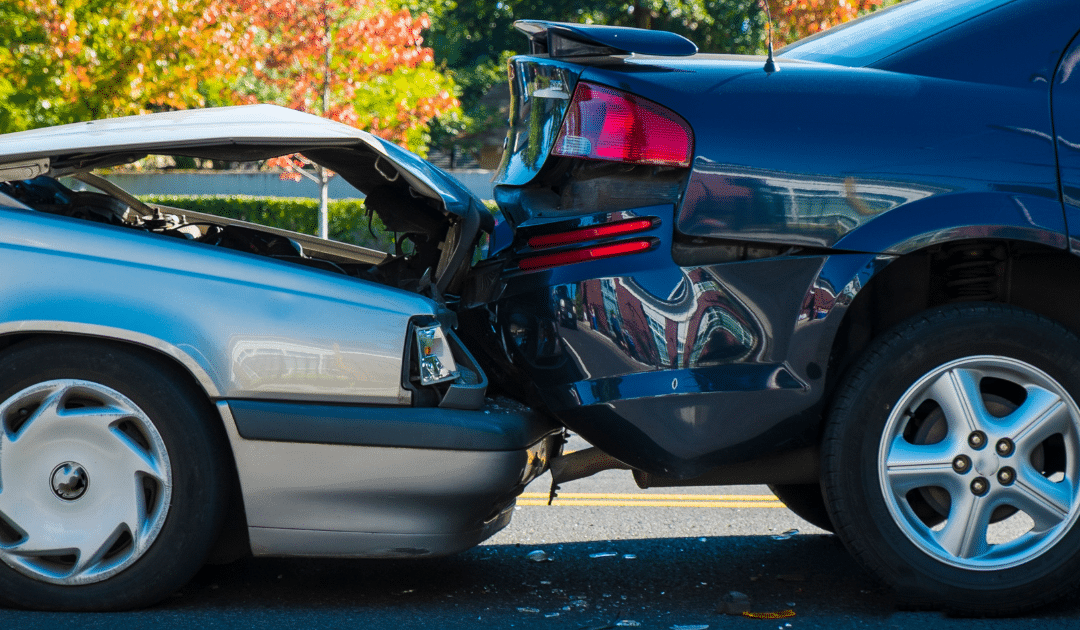
by California Casualty | Auto Insurance Info |
You got a new car—or a “new” used car. Now you have to figure out your car insurance. Here’s what you need to know about the most common types of auto coverage: liability and coverage for damage to your auto (comprehensive and collision).
Liability Coverage – What is it?
If you cause an accident, you are liable (responsible) for damages. Liability coverage is used to pay for those damages that you caused. Importantly, it does not cover any damage to your own vehicle; that’s covered by collision. It also does not cover injury to you and your family; it only covers the people in the other car. Liability coverage is required by law in most states.
There are two types of liability coverage:
-
- Bodily injury coverage helps pay for medical expenses, lost wages, and pain and suffering for the driver and passengers in the other vehicle.
-
- Property damage coverage helps pay for repairs for the other vehicle or for repair/replacement of property, such as a fence, damaged or destroyed in the collision.
We say “helps pay” because it depends on how much coverage you choose. The costs of an accident can be more than your insurance policy limit.
You choose a coverage limit.
Each state sets a minimum amount. The main goal of liability insurance is to protect your assets, and so you may choose a higher limit than the state specifies. You’ll want to take into account the amount of medical expenses that could be incurred in an accident. You could be responsible for lost wages for the driver. Even if he or she dies, you could be providing lost wages for the driver’s family.
Your insurance will only pay for the amount that you’ve designated. The rest comes from your pocket.
Example: Let’s say your liability limit is $50,000 per person. The driver of the car you hit has $40,000 in medical expenses. His passenger has $60,000. You would be responsible for paying $10,000 of medical costs for the passenger.
California Casualty offers a Package Discount where you may actually pay a bit less for carrying above state minimums and a discount if you carried 100/300 with your prior carrier. It doesn’t always cost a lot to bump up your coverage.
Most auto policies have three liability limits:
-
- Bodily injury liability limit per person
- Bodily injury liability limit per accident
- Property damage liability limit per accident
Limits are usually listed as follows: 30/60/15 describing $30,000, $60,000, and $15,000 of coverage respectively for bodily injury per person, per accident, and property damage. Some insurers offer a combined single liability limit that covers both bodily injury and property damage.
Liability coverage can protect you in a lawsuit.
The driver of the other car may decide to sue you. If that’s the case, your home and savings could be at risk. Liability insurance could help protect these assets by covering the cost of the lawsuit, lawyer’s fees and court costs.
Collision Coverage – What is it?
Collision coverage helps to pay to repair your vehicle or get one of equivalent cash value if yours is totaled. This applies both to accidents with other drivers and collisions with objects such as a fence or mailbox. It also covers vehicle rollovers. Unlike liability insurance, collision coverage is not usually required—unless you’re leasing a car or paying off a loan on a vehicle. However, it may be good to have.
-
- If you’re in a crash with another driver, and they were totally at fault, their property damage liability insurance will pay for your car’s repair or replacement.
- Your collision insurance kicks in if the other driver does not have enough property damage insurance—and if you don’t have underinsured (UI) or uninsured motorist (UIM) coverage.
- UI and UIM coverages are for injuries that you sustain if hit by an at-fault uninsured or underinsured motorist. You would either need to carry collision or uninsured motorist property damage (UMPD) coverage. This coverage often has a maximum limit (for example, $3,500). Most people carry one or the other but not both.
- If you were at fault in an accident, your collision insurance will cover the costs of your repairs.
Your coverage limit is the value of your car.
The maximum amount your insurance company will pay is the actual cash value of your car. If you total a used car, you’ll receive a total loss settlement that will go toward replacing your car.
With collision coverage, you will have a deductible. This is the amount that you have to pay out-of-pocket before your insurance kicks in. Choosing a higher deductible is one way to lower your insurance premiums. In most cases, you can’t buy collision-only coverage; you have to buy comprehensive coverage, too.
Comprehensive Coverage – What is it?
Comprehensive coverage is for damage to your vehicle other than collisions. Therefore, it’s not for accidents. It is for natural disasters, fires, vandalism, theft, and animals that damage your vehicle. Think of it as “bad luck coverage.” Comprehensive coverage is not usually required unless you’re leasing a vehicle or paying a car loan.
As with collision, your coverage limit is the actual cash value of your car.
Comprehensive coverage pays as much as the total value of your car—but not more. It makes sense to cover a new car. If your car is old and has little value, you may opt not to have comprehensive coverage. Just make sure if you do, that you have the funds available to repair or replace your car. With comprehensive coverage, you usually have a deductible. California Casualty does offer a policy with a zero deductible.
Do I really need comprehensive coverage?
Let’s say you have an old car, paid in full, that isn’t worth much. Car and Driver offers the following formula to determine If you need comprehensive insurance.
-
- Calculate your vehicle’s value.
- Subtract the deductible on your insurance policy.
- Subtract the cost of a six-month policy for comprehensive coverage.
- If you get a negative amount, it’s probably not worth it to continue to pay for this coverage.
Where you live may influence your decision.
If you live in a high-crime area, a wooded area with lots of deer, or a place with severe weather or flooding, you will want comprehensive insurance. It offers additional peace of mind for some likely scenarios.
Liability, collision, and comprehensive coverage are the main parts of a vehicle insurance policy. You can check the declarations page of your vehicle policy to see how much you are paying for each. For an overview of the car insurance you need, contact your insurance agent.
This article is furnished by California Casualty, providing auto and home insurance to educators, law enforcement officers, firefighters, and nurses. Get a quote at 1.866.704.8614 or www.calcas.com.

by California Casualty | Firefighters, Peace Officers, Safety, Travel |
You hear sirens and see flashing lights. There’s only one thing to do. Pull over.
There’s a reason you’re moving out of the way.
Even a few minutes delay can be a matter of life and death when you’re traveling by ambulance. The same holds true if a first responder can’t get to the scene of an accident, a fire, or disaster. Emergency vehicles need to get to the place where they can help people. If you’re on the road where they are traveling, you can help them get there by giving them a clear path to their destination.
Your moving car is dangerous to stopped vehicles.
You may have noticed a police officer, a roadside worker, a car pulled over on the side of the road, or even a wreck. Driving by them or rubbernecking at high rates of speed is dangerous. According to the National Highway Safety Administration (NHTSA), “making a traffic or emergency stop on the side of our nation’s highways is one of the most dangerous things law enforcement officers do in the line of duty.”
Every two weeks, a first responder or roadside worker loses his/her life, reported AAA. The agency recommends slowing down to a speed that is 10-20 mph slower than the speed limit and changing lanes to be further away.
Pay attention so you’ll hear and see emergency vehicles.
If you have the radio blaring, if you’re texting, or otherwise distracted, you may not see or hear an emergency vehicle approaching. You might not know that you have to pull over until that vehicle is right there. Not only is that stressful, but your quick actions might also cause a collision.
Here’s what to do when you see lights and hear sirens.
-
- Put on your turn signal and slow down.
- Check your mirrors and make sure the way is clear.
- Move over to the shoulder and park your vehicle.
- Wait until the emergency vehicle has passed. You will want to stay at least 500 feet behind it.
- Check your mirrors, put on your turn signal and carefully pull back into traffic.
Importantly, don’t slam on your brakes. Don’t travel through a red light. Don’t stop in the middle of your lane. And never try to outrun an emergency vehicle.
Where you are, and the direction you’re traveling, matter.
Emergency vehicles don’t always come from behind you. Sometimes they are traveling in the opposite direction, on the other side of the road. Do you still have to move over? Check your state laws for the rules regarding moving over for emergency vehicles.
-
- If you are traveling in a high-speed lane, and there is no room to stop, slow down.
- If you are traveling in the left lane, go right as traffic on the right moves over.
- If you are stopped at an intersection, stay there.
- If the emergency vehicle is traveling on the opposite side of a divided highway, you don’t need to pull over.
- If the emergency vehicle is traveling on the opposite side of the road, and there is no divider, pull over to your right. That vehicle may need to use your lane to get by.
Every state in the U.S. has a move-over law. Most people don’t know about it. Check your state’s law and learn what you need to do to keep everyone safe.
This article is furnished by California Casualty, providing auto and home insurance to educators, law enforcement officers, firefighters, and nurses. Get a quote at 1.866.704.8614 or www.calcas.com.

by California Casualty | Educators |
The typical college dorm room is pretty small. That makes it easy to keep clean, right? Not necessarily. With studying, classes, socializing, etc., it’s easy to neglect a room and let the mess pile up.
Since a clean room is easier to study (and live) in, you’ll want your college-bound child to know the right steps to keep it that way. Here are 6 tips to help them keep their dorm room looking its best all semester long.

Tip #1: Stock up on the right cleaning supplies
Whether you choose to clean before piling in the furniture of their new dorm, or not, a trip to the store for basic cleaning supplies on moving day is inevitable. They’ll need dishwashing liquid, a small tub, and a scrubber for dishes. Sponges, cleaning wipes, paper towels, a glass cleaner, and a general cleaner or disinfectant spray for wiping down surfaces. And for the floors, they’ll want a broom, dustpan, microfiber mop, and if you have carpet, a vacuum.
Money-saving solutions:
-
- Coffee filters work well as lint-free cloths for dusting.
- You can make your own cleaning solution of baking soda and vinegar. Mix one-part baking soda to two-parts vinegar (e.g. ¼ cup baking soda and ½ cup vinegar). Pour the mixture into a spray bottle.

Tip #2: Make room for storage
Having a place for everything, and making sure to return everything to its place, will help them keep things tidy. Before they head off to school, make sure your child has furniture that has enough storage for all of their things, or furniture/décor that can dual as storage. A cube organizer can easily become a place where towels and toiletries are kept, videos games and electronics can be placed in tubs, a desktop organizer can be used for papers and books, etc.
Money-saving solution:
-
- College kids these days have more items worth more money than ever before. Protect those items through renter’s insurance. Surprisingly it’s very affordable; it even costs less than textbooks!

Tip #3: Keep the air fresh and clean
Odors can easily overwhelm a dorm room because it’s such a small space. So, you should also stock up on freshening or purifying products and scented trash can liners before move-in day. Make sure they know to remove trash and food before it spoils. And if you do notice a smell, try to identify its source—or call maintenance.
Money-saving solution:
-
- Put a container of baking soda out to absorb odors.

Tip #4: Make cleaning fun
We all know cleaning can be quite a chore, but now’s the time to change that mindset. Pass on these helpful cleaning tips to encourage your college student that cleaning doesn’t have to be boring. 1. Transform cleaning into a fun activity. 2. Play your favorite music or listen to a podcast. 3. Set a timer and see how much you can do. 4. Cleaning can be a workout, and you can track the calories that you burn. 5. Clean with your roommate for double the fun—and results. Before they know it, cleaning will become a habit!
Time-saving solution:
-
- Clean and listen to a recording of a class lecture to kill two birds with one stone.

Tip #5: Negotiate with a messy roommate
Roommates could make or break your child’s college experience. And roommates may not be on the same page about cleaning. Encourage your child to talk to his/her roommate about some basic tasks, such as picking up clothes or taking out the trash. And even ask him/her to join in the cleaning fun, with music on a designated day.
Roommate solution:
-
- Make a roommate contract when you move in together to set expectations about cleanliness, guests, etc.

Tip #6: Schedule time for cleaning
This is the most important part. If they remember anything, tell them to remember this. Schedule cleaning into their daily routine just as they do studying and classes. Just 15 minutes at the end of each day will make a big difference. Then, schedule time on the weekend to clean. Do a deeper clean once a month. Have them use the following list or put together their own list of cleaning hacks.
Cleaning schedule breakdown:
Daily cleaning
-
- Make your bed.
- Wash your dishes.
- Tidy up. Put everything in its place.
- Disinfect frequently touched surfaces such as doorknobs and light switches.
- Check to see if the trash needs to be taken out.
Weekly cleaning
-
- Do your laundry, including your bedding and towels.
- Clean out your fridge of old food.
- Wipe down the inside of the microwave.
- Dust with a damp cloth or microfiber duster. Dust is especially attracted to electronics, computers, speakers, and televisions.
- Sweep and mop or vacuum.
- Clean the bathroom if you have one in your room.
Monthly cleaning
-
- Clean the windows and mirrors.
- Wipe down appliances.
- Clean inside the refrigerator and microwave.
- Dust the ceiling corners and get rid of cobwebs.
- Dispose of any food supplies that are out of date.
End of semester cleaning
-
- Clean underneath the refrigerator, other appliances, and under furniture.
- Wash your trash cans.
- Wipe down your walls and doors.
- Vacuum your curtains.
This article is furnished by California Casualty, providing auto and home insurance to educators, law enforcement officers, firefighters, and nurses. Get a quote at 1.866.704.8614 or www.calcas.com.


